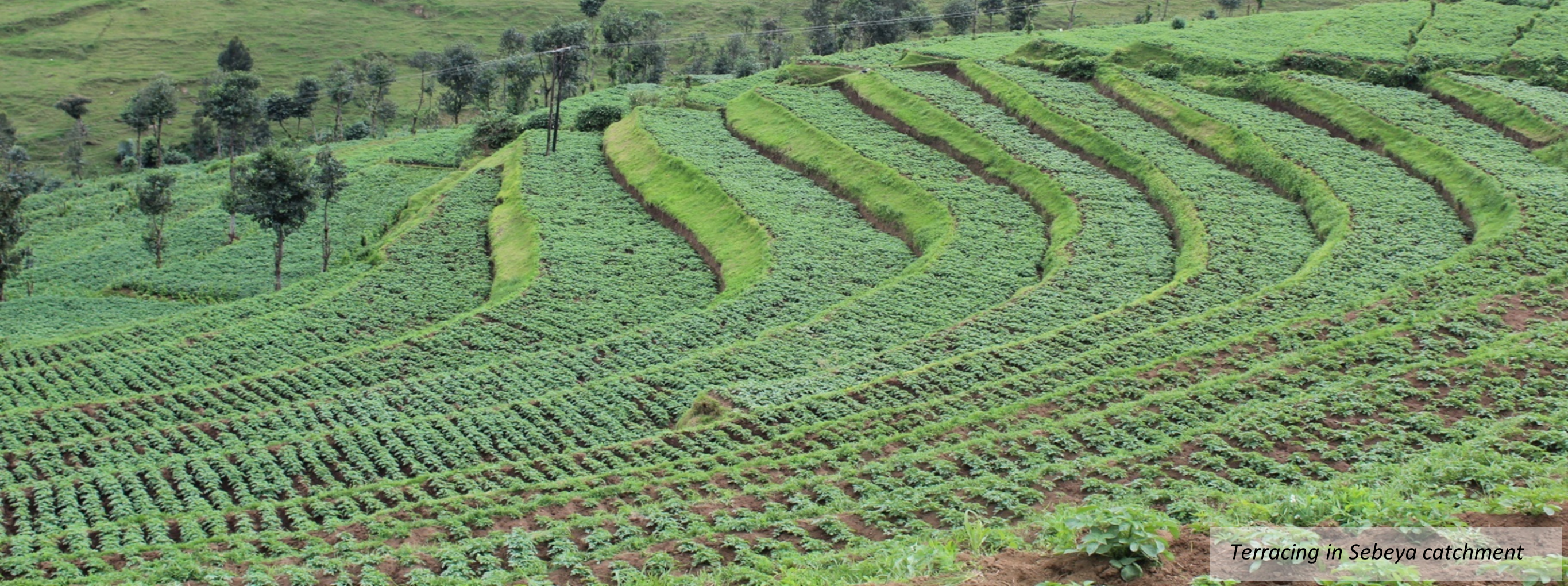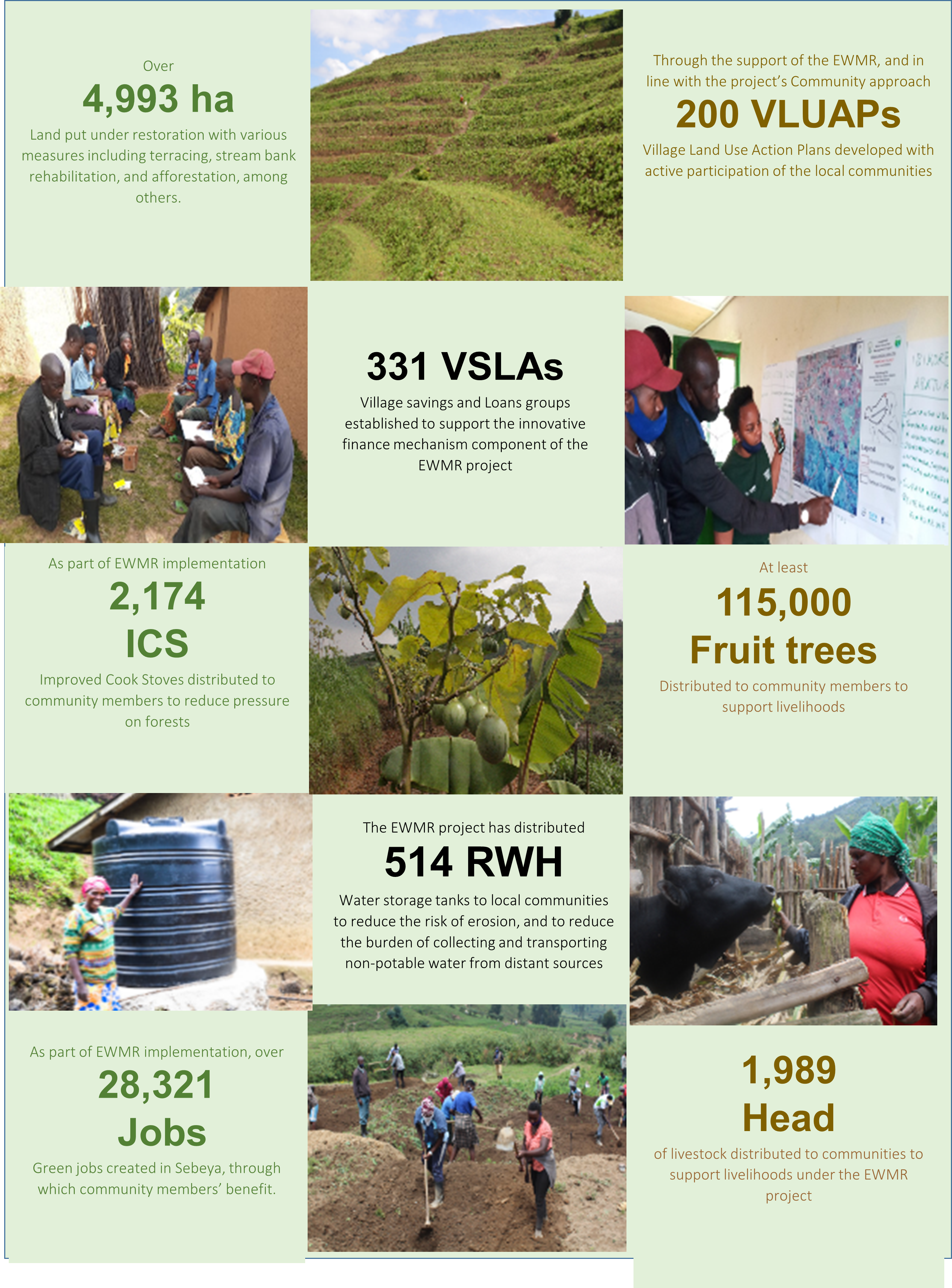Field trip
To get more information about the Payment for Ecosystem Services (PES) approaches and ongoing activities to value Ecosystem Services in Rwanda, a field trip to Sebeya river was organised on Friday, 10 June 2022.
Sebeya River originates in the mountains of Rutsiro District along the Congo Nile Divide, in Western Rwanda. Flowing for over 110 kilometers through the districts of Rutsiro, Ngororero, Nyabihu and Rubavu, Sebeya river drains into Lake Kivu at Gisenyi, discharging sediment-laden waters with turbidity ranging from 800-1500 NTU. Through investments in community-driven landscape restoration, the EWMR project targets to achieve the twin goal of improving the status of the landscape, indicated partly by improved water quality, while also improving livelihoods for the communities that rely on the Sebeya river. This achieved through the integration of landscape restoration as natural infrastructure for flood control, support to improved agricultural practices. The community-centered approach employed by the project assures community buy-in and long-term sustainability of landscape restoration measures.
Rwanda has the second-highest population density in Africa. While adequate access to clean drinking water, energy (e.g. fuelwood and hydropower), and food to meet the demographic needs in Rwanda are essential, land degradation is endangering ecosystem service supply including water and food security. The International Union for Conservation of Nature (IUCN) in collaboration with Government of Rwanda (Rwanda Water Resources Board), the Netherlands Development Organization (SNV) and Rwanda Rural Rehabilitation Initiative (RWARRI) are implementing the Embedding Integrated Water Resources Management project (EWMR), in Sebeya catchment with a goal of improving catchment management and increase the resilience of communities, nature and landscapes to climate change and other threats. Funded by the Embassy of The Netherlands in Rwanda, the project has four components: 1) Restoration of degraded lands 2) Development of innovative financing mechanisms and value chains; 3) Scaling up catchment and micro catchment planning, and 4) Implementing knowledge management systems. The cornerstone of the project is the active participation and empowerment of local communities in the development and implementation of Village Land Use Action Plans.
Through pro-active and participatory engagement, the project has yielded tangible benefits that include reduced impacts of flooding in the catchment; landscapes restored; enhanced agricultural yields, and improved community livelihoods. The landscape gains in land productivity are being achieved through the application of improved agricultural practices, improved seeds, supported by innovative financing mechanisms, strengthened capacity of communities, and access to markets for farm products. The project is a strong evidence-based demonstration of the potential and success of the community approach in landscape restoration for sustainable ecosystem service supply. Project achievements to date are indicated below.
ESP Africa 2021
 Registration website for ESP Africa 2021
Registration website for ESP Africa 2021ESP Africa 2021conference@espconference.org
ESP Africa 2021conference@espconference.orghttps://www.espconference.org/africa2021
2022-06-08
2022-06-10
OfflineEventAttendanceMode
EventScheduled
ESP Africa 2021ESP Africa 20210.00EUROnlineOnly2019-01-01T00:00:00Z
To be announcedTo be announced

